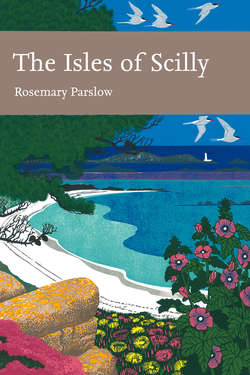Читать книгу The Isles of Scilly - Rosemary Parslow - Страница 59
ОглавлениеCHAPTER 7 The Uninhabited Islands
Nine leagues from the farthest westerly point of England, there is a space of sea, which, in a circuit of seventy miles, embraces a very great number of small islands and rocks, a great part of which are constantly covered with water, and are the cause of more ship wrecks than happens perhaps in all the other seas of Europe together. These islands, which, by modern geographers are called the Sorlings, are, by English, more commonly known by the name of Scilly.
Cosmo III, Grand Duke of Tuscany (1669)
WHAT CONSTITUTES AN island in Scilly is subject to considerable difference of opinion. Each writer seems to have had their own idea as to how many islands there are, their views mostly coloured by their particular interest. In 1542 John Leland estimated there were 140 islands ‘that grew grass’; in 1607 William Camden described Scilly as having ‘near 145 islands covered with grass or greenish moss’, but this is rejected by Bowley (1990) on the grounds that many of the smallest islands only had lichen present. Bowley defined an island as being land surrounded by water at high tide, supporting land vegetation at all times and locally accepted as an island. He then lists 54 islands that fit his criterion of having land vegetation. For the purpose of this account the definition of an island has more to do with its natural history, so in this case the designation is essentially pragmatic: it includes any land obviously separate at high water where any kind of wildlife is present. This means all types of islands are included, not just those with higher vegetation growing on them, and it includes bare rocky islets that have colonies of breeding seabirds or are used as hauling-out places by grey seals.
Most of the uninhabited islands can be considered in three main distinct geographical groups, each having their own special character. Of course the name ‘uninhabited’ is something of a misnomer. Rather they are islands not inhabited by humans, as there are plenty of other inhabitants – birds, rabbits and other animals. At the furthermost southwestern extremity of the archipelago, completely exposed to the full force of the sea and the prevailing winds, lies the Bishop Rock, surmounted by the lighthouse (Fig. 56). Included in one group with the Bishop Rock, lying just 2.5km away, is the low mass of jagged rocks,
FIG 56. Bishop Rock Lighthouse towers 49 metres above its rock base. May 2005. (Rosemary Parslow)
reefs and small craggy islands that form the Western Rocks. Continuing the semicircle inwards is the larger island of Annet, low-lying and exposed but large enough to be well vegetated. The Norrard or Northern Rocks also lie to the west of the main group of islands and in the path of the worst storms from the west. Islands in this group are also extremely rocky and bare, like the Western Rocks, just the tips of a more extensive mass of granite reefs hidden below the sea. The harsh contours of the Norrard Rocks and the Western Rocks support very few higher plants, unlike the Eastern Isles and the St Helen’s group (including Round Island and Teän), which seem much softer islands with their gentler contours and vegetation cover. The Eastern Isles are the most sheltered of all the uninhabited islands, protected by the half-circle of the inhabited islands.
The duplication of names of rocks and islands in Scilly can be confusing. For example there are two Green Islands, two Plumb Islands, two White Islands, and so on. With rocks it becomes even more confusing: twelve Round Rocks, four Seal Rocks, five rocks called Biggal and many duplications in the names of bays and other features. Over two hundred islands have some known natural history interest, and the most significant of these are described below.
SAMSON, WITH PUFFIN, WHITE, GREEN AND STONY ISLANDS
Samson is the largest of the uninhabited islands, 36 hectares above MHWS in extent and just over a kilometre in length, consisting of twin hills linked by a sandy neck. Along the eastern side of the island are wide sand flats stretching across the shallow channel to Tresco. At low tide much of the flats is exposed, revealing the remains of ancient walls. The twin granite hills top 30 metres and have archaeological remains on their summits (see Chapter 3 for more about the history of Samson). Many of the lower slopes of the island are covered in deeper soils, now mostly under bracken. Ruins of several abandoned cottages from the time the island was inhabited can be seen, mainly on the north slope of South Hill. The island was finally evacuated in 1855. Some of the field walls are still standing, especially on South Hill, and are seen clearly when the bracken has died down. Other walls may have been robbed to provide stone for the wall of the deer park. Although the 3.5ha enclosure on South Hill was abandoned by 1860 when the deer escaped, the wall is still clearly visible. The few trees found on the island, tamarisk and elder, are associated with the former inhabitants, as are plants such as primroses that probably originated in their gardens. A sand bank at the northeast corner of Samson is the usual landing place for visitors, and very popular for sunbathing and picnicking. Behind the landing is an area of sand dune and low scrub with North Hill rising up behind (Fig. 57). On top of the hill and along the ridge is an area of heathland, much of which has been burned on a number of occasions, exposing the line of archaeological sites along the top. The slopes of the hill and much of the rest of the island are covered in dense stands of bracken. South Hill has vestiges of heathland, but
